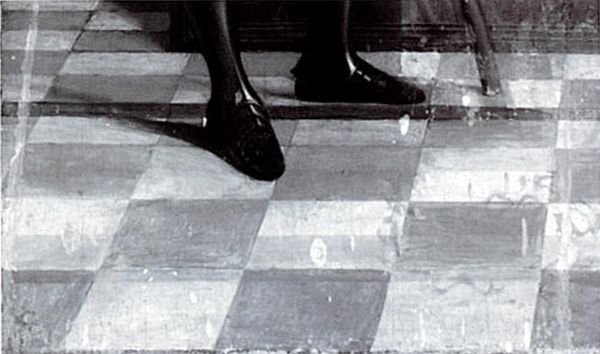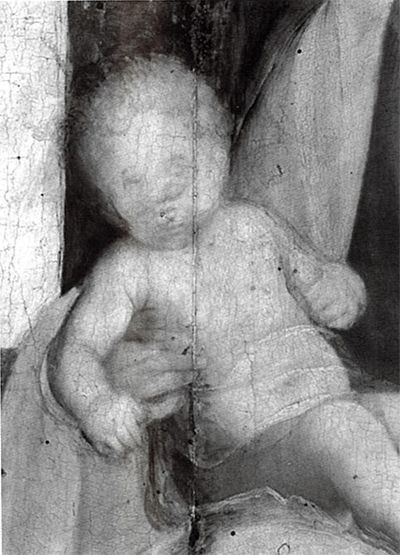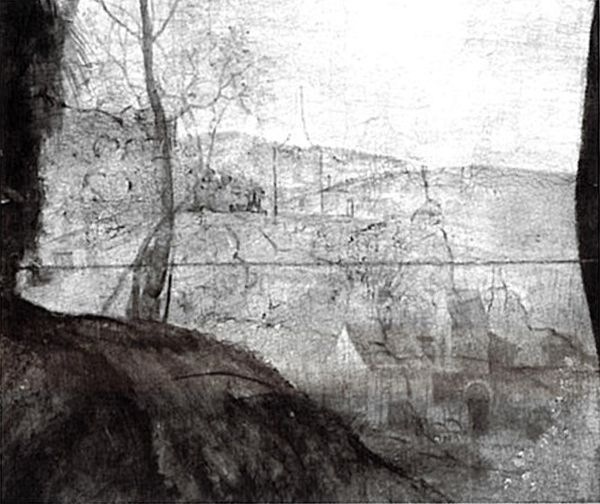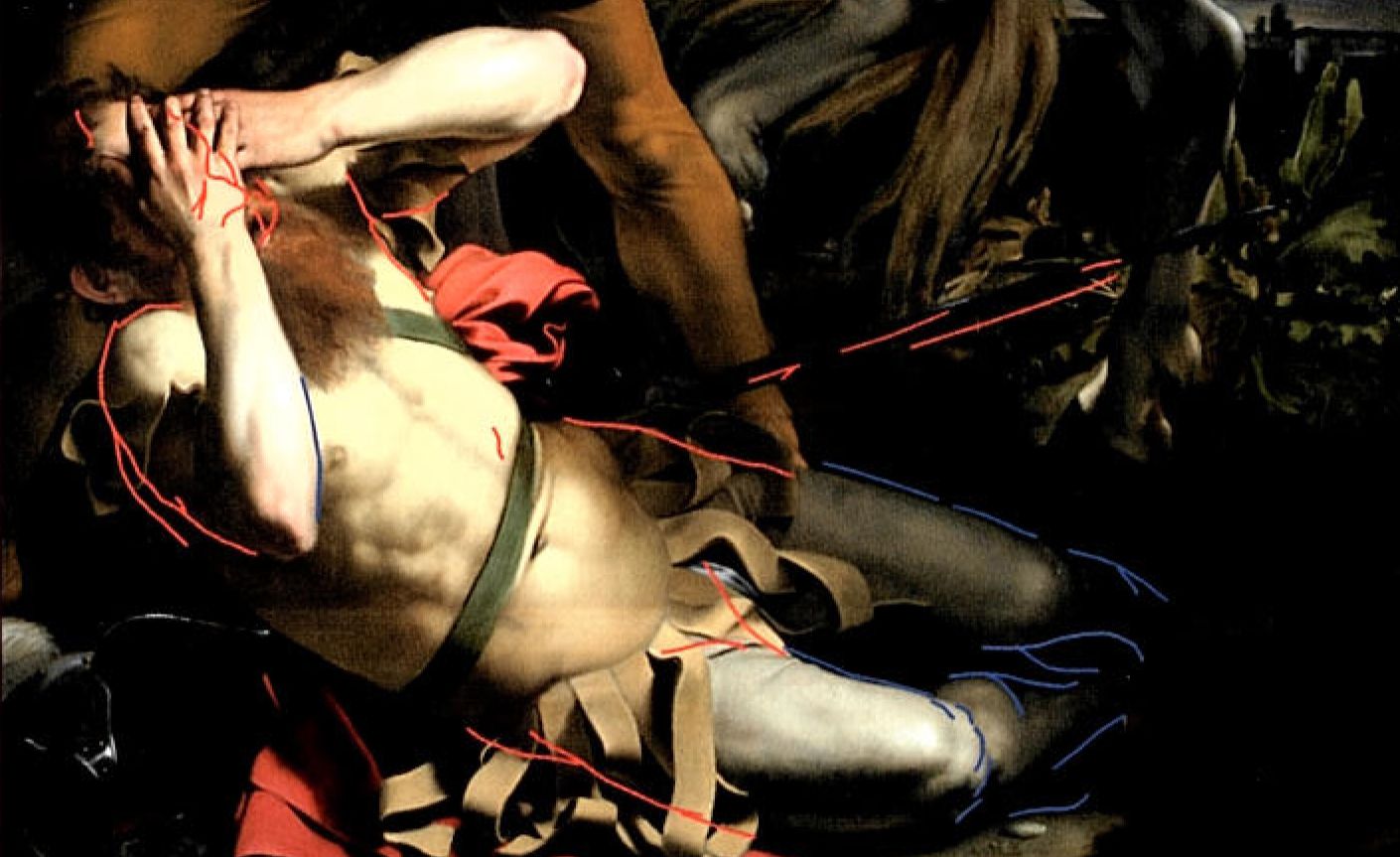Arte/Art, News, Restauro/Restoration/Conservation
New evaluations on Caravaggio’s methods of underdrawing
The research on the underdrawing in Caravaggio’s painting is a very challenging subject that has charmed generations of scholars and scientific experts. So it’s no surprise that at the conference in London on the anniversary of The National Gallery Technical Bulletin, we compared it to the medieval legend of the Quest for the Holy Grail. Besides the adventurous part of the Quest, its essence is that the Grail could never be found, but that, in the course of looking for it, all sorts of interesting things happened.

The research on Caravaggio’s preparatory drawing method is perhaps the modern equivalent in the field of artistic techniques. It is something that we must continue looking for, even though we alla know that maybe it can never be found. Or that, eventually, we might not be able to rocognize it, even if we were to find it.
It is obviously impossible to go through all the findings, the hypotheses, and the theoretical constructions of Caravaggio’s methods of sketching his ideas on the definitive support: the literature on the subject is huge. However we could say that there is a general understanding that Caravaggio never used graphic drawing as a method of creating his paintings.
The Venetian old masters, namely Giorgione and Titian, are usually referenced to convince us of Caravaggio’s lack of preparatory drawing in his compositions. The comparison between Giorgione and Caravaggio is not a modern idea. It goes back to Federico Zuccari’s visit to the Contarelli Chapel in San Luigi de’ Francesi, when the mannerist artist said: “io non ci vedo altro che il pensiero di Giorgione” (I see in it nothing more than Giorgione’s conception of painting), an allusion to the well-known convroversy between disegno and colore.

According to Bellori, Caravaggio visited Venice and was greatly interested in the style of the Venetian masters. He describes the first approach of Caravaggio to this art as “he came to enjoy Giorgione’s colouring so much that he chose him as a guide to imitate”.
Going back to the original written sources on Giorgione, to Vasari, for example, who cannot be considered partial to Venetians, we must stress that his words do not actually deny the use of scketches or drawing on the definitive surface of panels or canvases. He complains that Giorgione (and Titian, later) never used to carefully study the single figures and the general composition on paper first, but used to keep live models in front of the easel, “which is no small restraint”.
Infrared reflectography indeed shows a great deal of underdrawing in Giorgione’s paintings, as we can see on the Pala di Castelfranco, where there si an accurate perspective drawing showing a probable preliminary architectural setting that Giorgione later abandoned (Fig. 1). Many figural details show this as well, for example, in the child Jesus’s face where at least one different position was tentatively drawn (Fig. 2).
The IR reflectography of Three Philosophers also shows a freehan sketch for the landscape, and in some details it is even possible to detect the use of a carbon-copy cartoon (Fig. 3).
These important results on Giorgione (and other Venetians), were acquired thanks to the IR INO-CNR scanner technology and contradict all the previous strong opinions about the non-existence of a preliminary drawing in Venetian painting. This is one of many cases where scientific and technical progress can help focus a better understanding or art history.

Only a few years ago, the early us of X-ray in the field of technical research had greatly overestimated the consideration of incisions as a means of “drawing” in Caravaggio’s works. The main idea seems to be that Caravaggio, instead of sketching his compositions with a charcoal or a brush, used a sharp stick or the butt end or the brush to mark the placement lines onto the preparation ground. As already stated, the search for incisions has been greatly overrated. In many ways it has been the main cause of the denial of the existence of a graphic underdrawing in Caravaggio’s method. But obviously, the few studies that were conducted by means of inadequate instruments had convinced many of the hopelessness of IR reflectography in Caravaggio’s case.
[…] To read more:Caravaggio’s Painting Technique. Proceedings of the CHARISMA workshop

